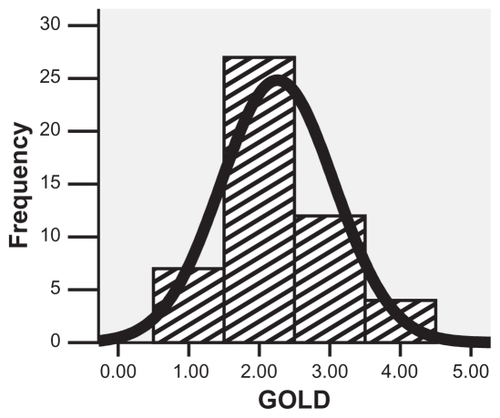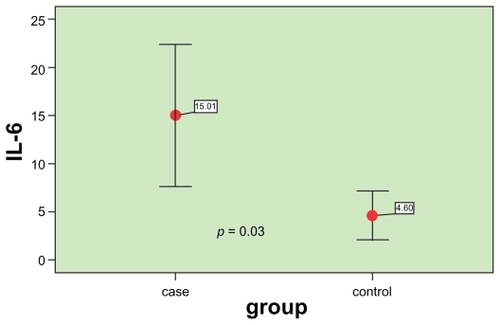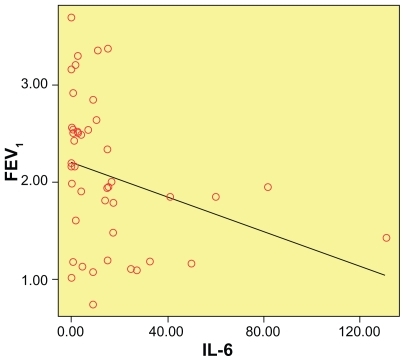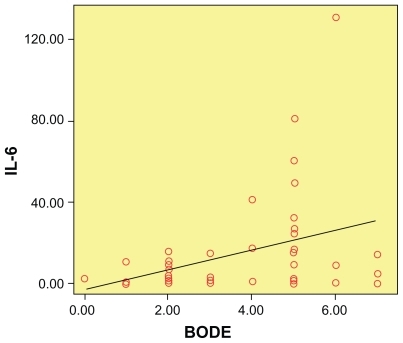Figures & data
Table 1 Demographic and clinical parameters of lung function in 50 patients with chronic obstructive pulmonary disease as a late pulmonary complication of sulfur mustard poisoning
Figure 1 The frequency of GOLD stages in 50 chemical warfare patients with chronic obstructive pulmonary disease as a late pulmonary complication of sulfur mustard poisoning.

Figure 2 Comparison of serum interleukin-6 between patients and controls.

Table 2 Correlation of serum interleukin-6 with lung function parameters in 50 patients with late pulmonary complications of sulfur mustard poisoning

